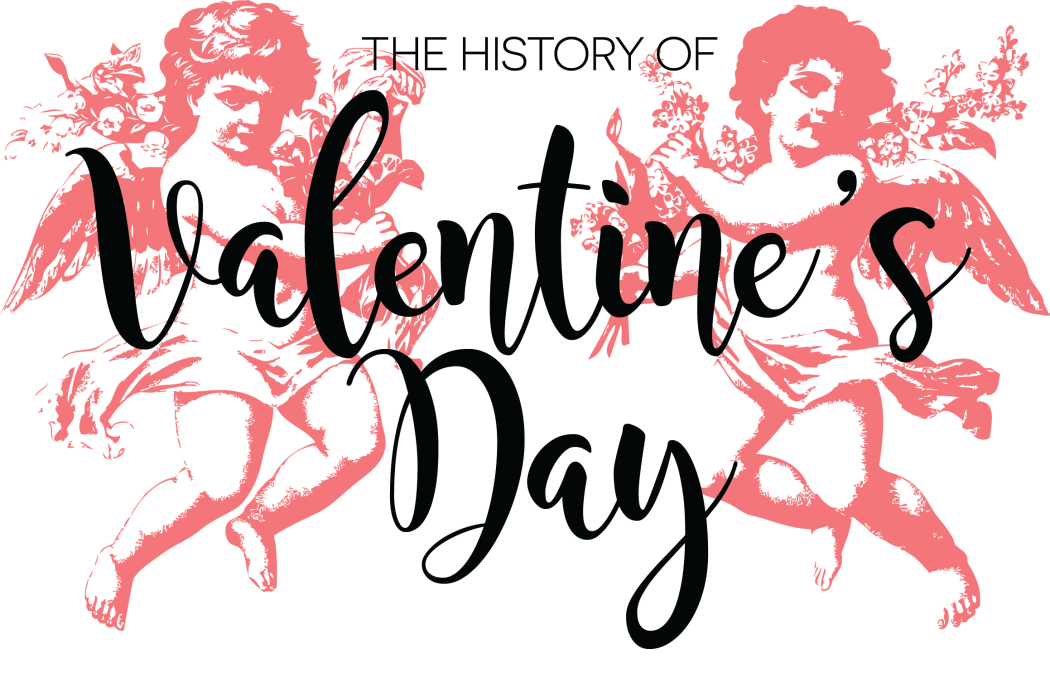The History of Valentine’s Day
Valentine’s Day is the day where flowers and chocolates are given.
Romanticism is encouraged and people are swept off their feet. The little known history to this Roman Catholic holiday is that it surrounds a skull sitting in a gold decked-out box people pray to for penance.
There are actually three martyrs for whom Valentine’s day is celebrated according to an article from www.catholic-saints.net. One was a Roman priest, another was a bishop from Interrama (now known as Terni). Both of these suffered a martyrdom in the late third century. The last one was in Africa with little information about him.
From the CBN (Christian Broadcasting Network), Saint Valentine was a Roman priest fighting against an edict from Emperor Claudius of Rome prohibiting the marriage of young people. The basis for the edict was to have a larger fighting force of unmarried soldiers because they supposedly fought better with no marital commitments.
St. Valentine would marry the young couples in secret, though eventually he was caught and tortured. Ultimately, in 269 A.D., he was sentenced to a three-part execution with a beating, a stoning and a decapitation, all for his stand on Christian marriage.
Today, Valentine is known as the patron saint of lovers. His skull can be found at the basilica of Rome with a crown of flowers. However, CBN claimed the remains of Valentine are kept at White Friars Church. They are one of three churches that claim to have his remains,
Elizabeth Hanes, from History.com, said Pope Gelasius 1 first called Valentine’s true identity into question around 496 A.D. The pope declared only God knew his real fate.There are two accounts of the martyrdom of Valentine and Historians believe them to be the same man.
Not to be forgotten in Valentine’s Day lore is the chubby cherub that flies around shooting arrows at people. Though his ties to the holiday are of Greek descent. His original name was Eros and he was known as the god of love according to Laura Shumm of History.com
“One of the first authors to write about Eros was Hesiod around 700 B.C,” wrote Shumm.
Eros was the son Aphrodite and Zeus, and was considered to be irresistible to both man and gods. Later his image changed to a mischievous child and the mascot of love today.
Regardless of the history of Valentine’s day, modern-day perspectives vary of what the holiday means to people.
Alina, an undeclared sophomore who wished to keep her last name anonymous, said the holiday is solely for commercial purposes.
“My plan is to watch Netflix,” Alina said. “To me, Valentine’s day is just like any other day”
Rylie Anderson, a senior in marketing, carries a different approach entirely.
“When I was kid, I viewed it as a way to get free candy,” Anderson said. “ Now I view it as a time to set up something to do with my wife. I don’t have plans, but it’s my year, so I better get some quick.”
When asked about what these students thought about what Valentine’s day meant, answers varied. Some believed it to be all about marketing or renamed it to National Singles Awareness Day, which demonstrates the diversity found on campus.
“Valentine’s day is about showing love toward the people you care about,” Andersen said.
Anderson isn’t alone in his views either. Chelle Marble is a junior studying anthropology sees Valentine’s as a day to think of others.
“There’s definitely commercialism in it,” Marble said, “but it’s also a good reminder to take care of the people that you love. When I was a kid, it was about getting candy and flowers, but now it’s just like any other day.”
Nick Taylor, a freshman studying journalism, said Valentine’s day is the day of giving and receiving gifts in the form of chocolates and flowers. Though he doesn’t expect anything more than candy.
“I liked it better as a kid because you would pass those cards out at school and they were fun with all the candy in it,” Nick said. “As you get older, it’s more for the girls. There isn’t as much in it for a guy.”
— fallrush92@gmail.com
@fallrush92

